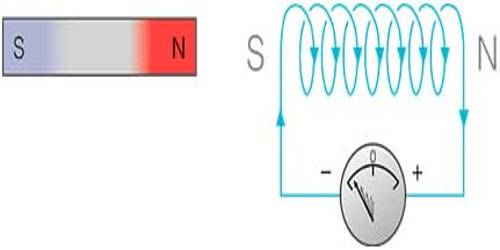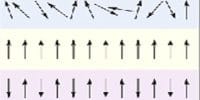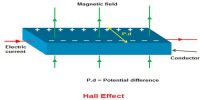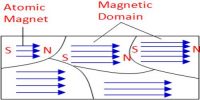Lenz’s law and Principle of Conservation of Energy
Lenz’s Law: In case of electromagnetic induction, the direction of the induced current (or emf) is such as to oppose the change of magnetic flux which causes the production of induced current (or emf) in the circuit.
In other words, the direction of induced current is such as to oppose the very cause which is responsible for inducing the current (or emf) in the circuit.
Suppose the North Pole N of a bar magnet NS is approaching towards a coil. As a result, the plane of the coil in front of that pole behaves like the same pole, that means a repulsive force the approach of that inducing pole is resisted.
Again, if the inducing pole is moved away, then the induced current flows in the opposite direction so that the nearer plane of the coil behaves like an opposite pole. That means by attraction on the inducing pole the decrement of the magnetic flux is resisted.

In the first case, as the bar magnet approaches towards the coil, a number of field lines of flux passing through the cod start increasing [Fig. (a)] and in the second case, as the bar magnet moves away from the coil, the number of field lines passing through to coil starts decreasing [Fig. (b)]. In both the cases, the direction of induced current in the coil is such that it opposes the forward and backward motion of the bar magnet. Now by keeping the bar magnet stationary, if the coil is moved towards or moved away from the bar magnet similar phenomena will occur. That means a relative motion either in the magnet or in the coil will produce current in the coil.
We know, an energy source is needed to flow current in a coil or a circuit (For example, electric cell). But here, in this case, there is no electric source with the coil; even then current flows in the coil. It is likely to think that without any expenditure of energy current has been created in the coil. This is against the conservation principle. According to the conservation principle, energy can neither be created nor can be destroyed; only energy can be transformed. On careful observation, it will be evident that this is not against the conservation principle of energy. The reason is that as the bar magnet approaches towards the coil due to the production of current in the coil similar pole is created in the front surface of the coil which opposes the forward motion of the magnet.
Again, when N pole of the magnet moves away from the tad dissimilar pole creates on the front surface of the coil and an attractive forte at is between the coil and the magnet. So, work is done against the repulsive force during forwarding motion and an attractive force acts during backward motion. In order to do this work, mechanical energy is which is transformed into electric energy in the coil. Consequently, current flows in the coil. So, it is seen that in case of electromagnetic induction Lenz’s law conservation principle of energy.















